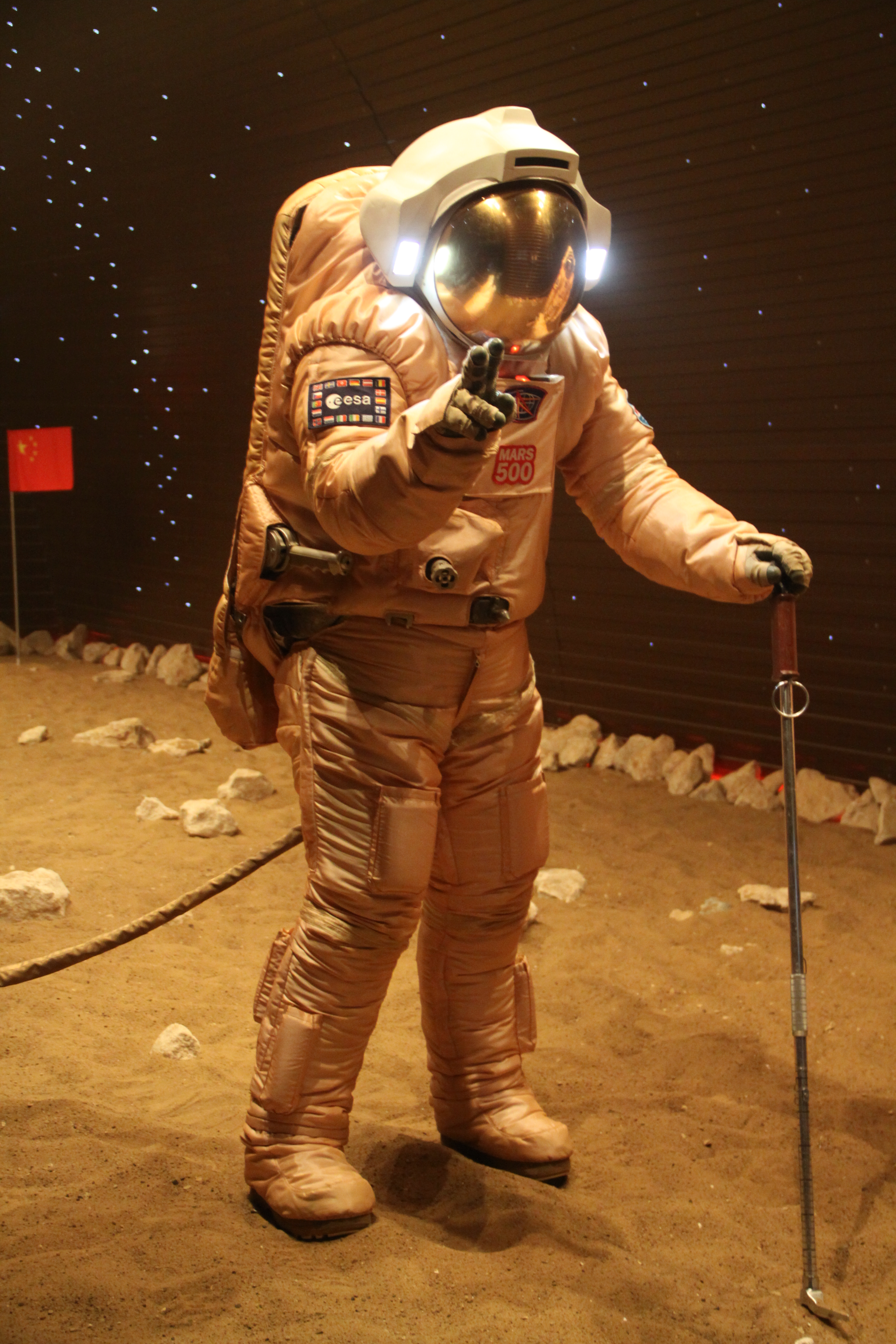
A crew of mock Mars explorers has wrapped up the exploration of a simulated Red Planet and is now set to "fly" back home to Earth – and back to reality.
The Red Planet simulation, called the Mars500 mission, entered the months-long home stretch Wednesday (March 2), when six "astronauts" began maneuvering their spaceship — actually a collection of sealed modules on the outskirts of Moscow — to leave Mars orbit and return to Eath. The virtual interplanetary journey will end in November, when the spaceflyers will "land" on their home planet and breathe fresh air for the first time in nearly 18 months.
"T-249 days to the end of 520-day experiment," Mars500 organizers wrote in a Twitter message yesterday. "TODAY: hatch closure, Mars Lander undocking. See you later Mars!"
Elaborate Mars experiment
Mars500 is a $15 million experiment being run by the European Space Agency, Russia and China. It "launched" last June, when six male crewmembers — three Russians, two Europeans and a Chinese astronaut trainer — locked themselves inside a windowless mock spaceship at the Institute of Biomedical Problems in Moscow. [Infographic: The Mars500 Mission]
The project aims to simulate a round trip to Mars — hence the name. Researchers are closely monitoring the crewmembers' physiological and behavioral responses during the long months of isolation and confinement.
Project scientists hope the experiment will help them better understand the stresses that such a long space voyage would impose on human crews, as well as offer solutions to help prevent or mitigate problems during an actual Mars mission, officials have said.
Get the Space.com Newsletter
Breaking space news, the latest updates on rocket launches, skywatching events and more!
Last month, three Mars500 astronauts descended in a mock lander to the Martian surface — actually another module, outfitted with rocks and some red dirt. They drove rovers around in a high-tech video game and performed a series of "Marswalks" while wearing 77-pound (35-kilogram) spacesuits.
"I think that even if it wasn't exactly the same emotion someone would feel on Mars, it did come quite close, at least for me," Mars500 astronaut Diego Urbina wrote in a blog post after a simulated Marswalk.
Next stop: Earth
Urbina and the two other Marswalkers returned to the mothership on Feb. 27, rejoining the three astronauts who had stayed behind "in orbit." Yesterday, the six reunited crewmembers went through the motions of loading the "lander" with rubbish and detaching it from the main spacecraft, as the crew of a real Mars mission would do upon departing.
Today, the Mars500 astronauts began positioning their mothership for one last orbit around Mars, according to ESA officials, after which the crew will head back toward Earth. The trip home should take about eight months. It's likely to be the most difficult part of the mission for the crewmembers, since they don't have a highlight like the Mars landing to look forward to, officials have said.
But as of now, things are going well, according to project organizers.
"The crew is highly motivated and performing very well," Jennifer Ngo-Anh, ESA's Mars500 manager, said in a recent statement. "At this point, everything looks very good."
You can follow SPACE.com senior writer Mike Wall on Twitter: @michaeldwall.
Join our Space Forums to keep talking space on the latest missions, night sky and more! And if you have a news tip, correction or comment, let us know at: community@space.com.

Michael Wall is a Senior Space Writer with Space.com and joined the team in 2010. He primarily covers exoplanets, spaceflight and military space, but has been known to dabble in the space art beat. His book about the search for alien life, "Out There," was published on Nov. 13, 2018. Before becoming a science writer, Michael worked as a herpetologist and wildlife biologist. He has a Ph.D. in evolutionary biology from the University of Sydney, Australia, a bachelor's degree from the University of Arizona, and a graduate certificate in science writing from the University of California, Santa Cruz. To find out what his latest project is, you can follow Michael on Twitter.









